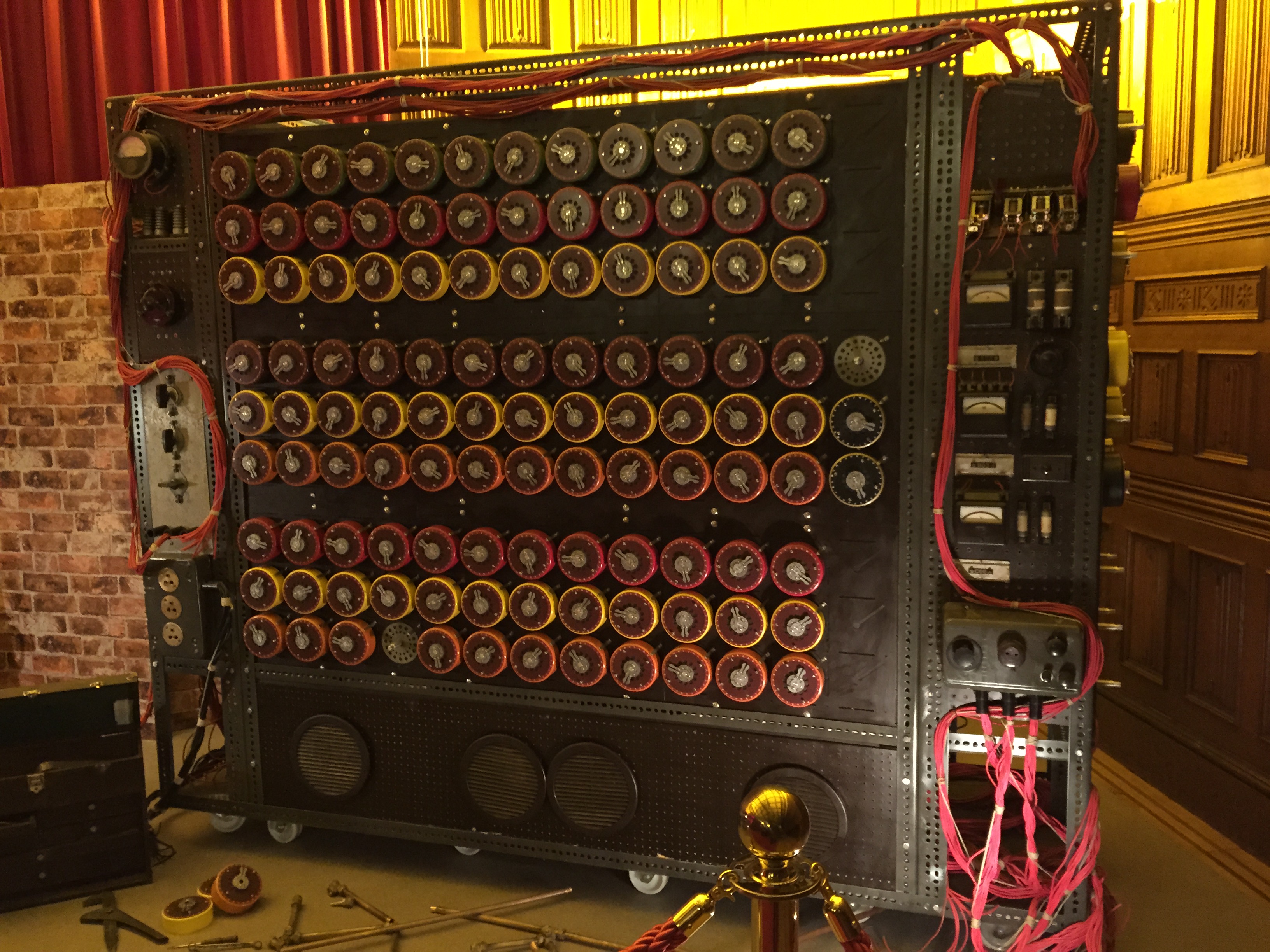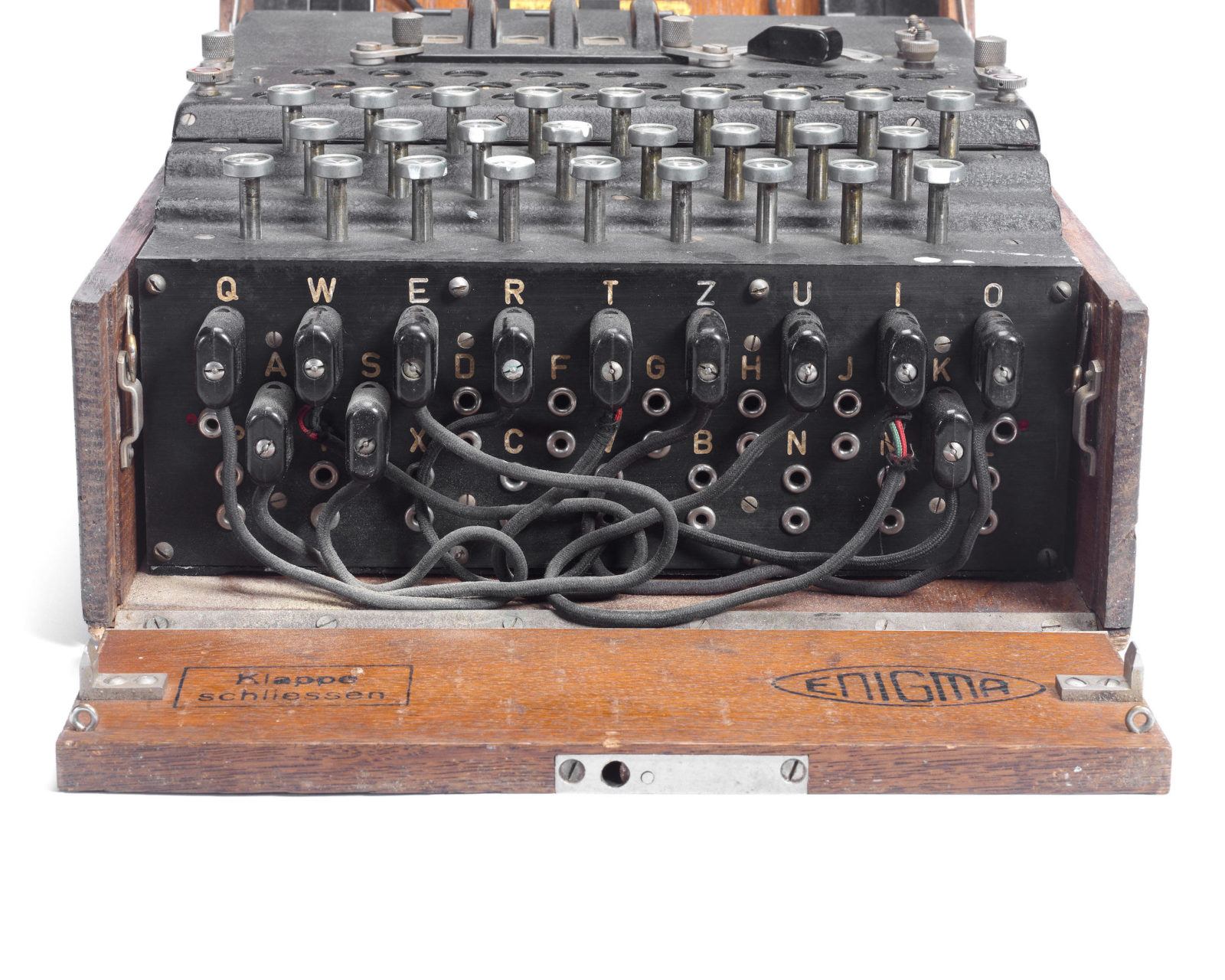
- #Digital enigma simulator how to
- #Digital enigma simulator movie
- #Digital enigma simulator full
- #Digital enigma simulator series
How many possible paths does that give us through three rotors for the letter A? Keep in mind that each rotor can be turned to any position. That means that for the first rotor there are 26 possible paths through it for A. As shown in the photo from inside an actual Enigma, each rotor also has an attached alphabet ring that turns with the rotor and is used to set the initial position of the rotor. In some Enigma machines there were three rotors, and the most used was eight. And internally, each of the rotors are wired differently i.e. In the rotor, each wire has external contact points on either end. That allows some multiple of these rotors to be put side-by-side, with adjacent contacts touching. Follow the diagram above and you notice that the first Z came from the H, but the Z in the fourth position came from the K. Repeating this step of substitution followed by turning the rotor for each letter, HACKADAY becomes ZJGZLVFA. After one turn, A would now be substituted with whatever Z formerly was, namely J. By turning the rotor while leaving the letters stationary, the connections between letters change. One way to easily implement that, and it’s the way it’s done in the Enigma, is to embed all that wiring in a wheel/rotor. And even better, if they change each time a letter is encoded. An improvement would be for all those pairings to change. The ability to change the mapping is important because once someone deduces that G is the substitution for A, they’ll know that’s true for every G in the ciphertext. Rotating substitution cipher Enigma rotor wiring But those lines can be wires, electrically connecting each pair, which opens up the possibility of easily changing how the substitution is mapped through to the ciphertext. We could redraw the cipher as two alphabets with letters in alphabetical order, and draw lines between the paired letters. Adding Rotors Simple substitution cipher with wires Let’s take this further like the Enigma machine does. To decrypt it we do the reverse, look for each letter in the bottom row and substitute with the corresponding letter in the top row, getting HACKADAY. Similarly, looking for the A in the top line, we see we should substitute it with a G.

Using the above cipher we look in the top line for the H and we substitute the letter below it, a Z. Let’s say we want to encrypt the word Hackaday.
#Digital enigma simulator how to
Most have seen how to encrypt messages using a simple cipher like this.
#Digital enigma simulator movie
Most recently the story of how it was broken was the topic of the movie The Imitation Game. Possibly the greatest dedicated cipher machine in human history the Enigma machine is a typewriter-sized machine, with keyboard included, that the Germans used to encrypt and decrypt messages during World War II. It’s also one of the machines that the Polish Cipher Bureau and those at Britain’s Bletchley Park figured out how to decipher, or break.
#Digital enigma simulator full
But it’s really quite simple. The following is a step-by-step explanation of how it works, from the basics to the full machine. Many commentators say the flow of Ultra communications intelligence from the decrypting of Enigma, Lorenz, and other ciphers shortened the war substantially and may even have altered its outcome.To many, the Enigma machine is an enigma. Poland's sharing of her achievements enabled the western Allies to exploit Enigma-enciphered messages as a major source of intelligence.
#Digital enigma simulator series
While Nazi Germany introduced a series of improvements to the Enigma over the years, and these hampered decryption efforts, they did not prevent Poland from cracking the machine as early as December 1932 and reading messages prior to and into the war. The receiving station would have to know and use the exact settings employed by the transmitting station to successfully decrypt a message. The security of the system depends on machine settings that were generally changed daily, based on secret key lists distributed in advance, and on other settings that were changed for each message.



The rotor mechanism changes the electrical connections between the keys and the lights with each keypress. Entering ciphertext transforms it back into readable plaintext. If plain text is entered, the illuminated letters are the ciphertext. In typical use, one person enters text on the Enigma's keyboard and another person writes down which of the 26 lights above the keyboard illuminated at each key press. The Enigma has an electromechanical rotor mechanism that scrambles the 26 letters of the alphabet.


 0 kommentar(er)
0 kommentar(er)
